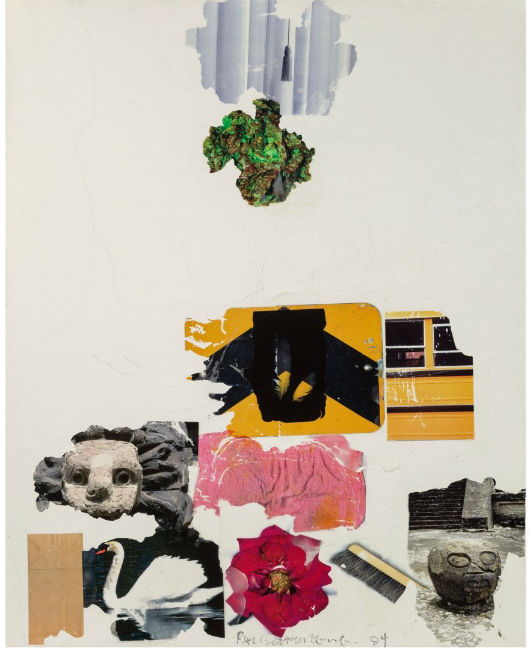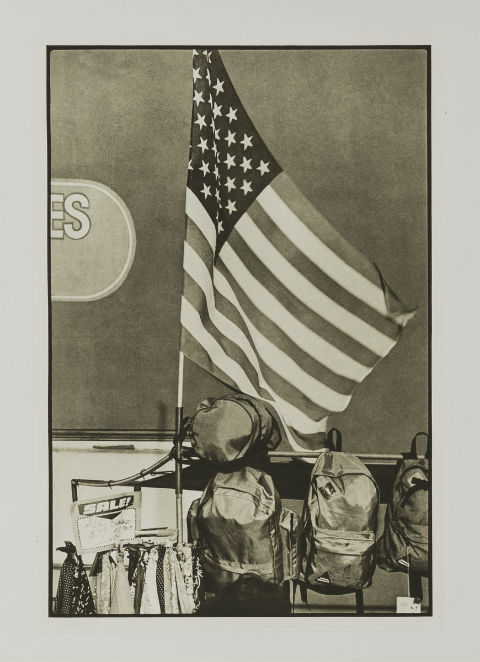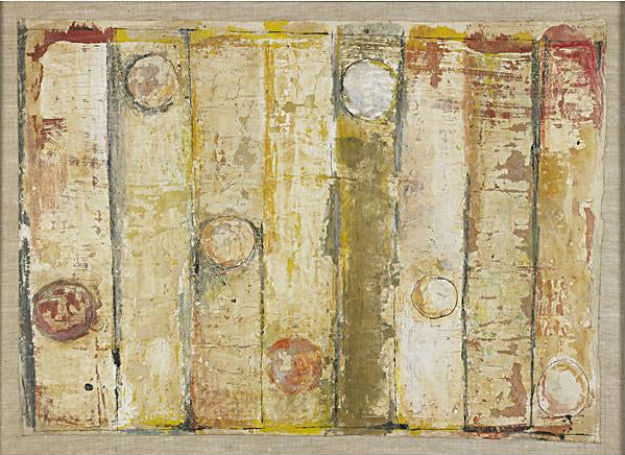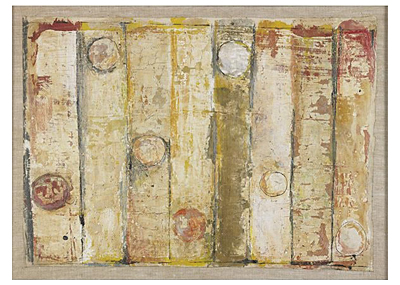
NEW YORK – The artist Robert Rauschenberg (1925-2008) didn’t just break a few rules of the art world, he threw out the rule book and rewrote it, experimenting with a wide variety of styles, materials and techniques to create a diverse and highly inventive body of work. While his art anticipated Abstract Expressionism, he did not restrain himself to one movement and his oeuvre ranged from paintings to photography, mixed media and even avant-garde performance pieces.
Born in Texas in 1925, Rauschenberg studied pharmacology before serving in the U.S. Navy. Afterward, he studied at Paris’ famed Académie Julian before continuing his studies back in the United States with Josef Albers and later, Cy Twombly. These are but two of several important collaborations the artist would embrace with equally gifted artists. By 1954, he was working with Jasper Johns and the two had studios near each other for a few years, allowing for a fertile exchange of ideas and spirited discussions.

“Although Rauschenberg is not associated with one particular genre or movement, he represents the breadth of artistic exploration post-World War II,” said Joanna Robotham, curator of modern and contemporary art at the Tampa Museum of Art, which opened the exhibition “Robert Rauschenberg: America Mix-16” in August 2019 of the rarely seen portfolio from its collection. “He emerged as an artist at the dawn of Abstract Expressionism and inspired artists working in a range of media and styles, and across generations, including Andy Warhol and Jean-Michel Basquiat. Like his contemporaries, who also defied categorization, Rauschenberg worked across media. While he is known for his Combines, an amalgamation of painting and sculpture, he also created sets and costumes for choreographers such as Trisha Brown and Merce Cunningham.” The museum’s exhibition shows how photography was at the core of Rauschenberg’s prolific artist practice and how it anchored him from his time as a student to his meteoric rise as one of the 20th century’s leading and most influential artists.

The Robert Rauschenberg Foundation, which works to preserve and foster the artist’s legacy, writes on its website: “At the time that he began making art in the late 1940s and early 1950s, his belief that ‘painting relates to both art and life’ presented a direct challenge to the prevalent modernist aesthetic.”

Among Rauschenberg’s most well-known innovations were his Combines. Blurring the line between traditional paintings and sculpture, these artworks could be hung on the wall or left freestanding.
“His interest in found materials and using everyday objects in his art elevated the mundane to the extraordinary,” said Robotham. “Rauschenberg’s artworks – from photography, sculpture, painting, prints, and stage sets – offer a generous glimpse in the beauty the artist found in the world.”
Rauschenberg often incorporated photography in his work, layering images and motifs to create bold narratives or observations about the world around him, The Tampa exhibition of his Suite 1 portfolio from America Mix-16, 1983, features photographs of found vignettes or objects he discovered in his travels around the United States, including “a dilapidated rag hanging from the gas cap of an abandoned truck or the inadvertent still life of trashed objects resting on the curb,” according to a museum write-up.

Highly ambitious and successful, Rauschenberg was widely influential in the art world and his work resonated with many other artists. His influence extended far beyond inspiring artists, however. “Without a doubt, Rauschenberg helped alter the course of art history with his unique approach to art-making,” Robotham said. “However, what is meaningful to me is Rauschenberg’s connection to the Tampa Bay area, where he established a home and studio on Captiva Island, and the local impact of his legacy. He found inspiration in the Florida landscape and collaborated on projects with artists and organizations in the area such as Graphicstudio at the University of South Florida.”
Robotham is also increasingly impressed by the artist’s early interest in harnessing art to create social change by creating the ROCI (Rauschenberg Oversees Cultural Initiative), a project he traveled from 1984-1991 to countries with a history of suppressing artistic expression. “While his art continues to be celebrated in major exhibitions, his impact and influence as an advocate for human rights and creative freedom are essential to understanding the totality of Rauschenberg’s artistic practice,” she said.
Rauschenberg himself perhaps said it best. In an undated statement, he wrote, “Art has no borders. Specialization leads to cultural sterilization. An artist is a diplomat, a prophet, a historian, a poet and a calendar of nourishment of morality and energy.”



